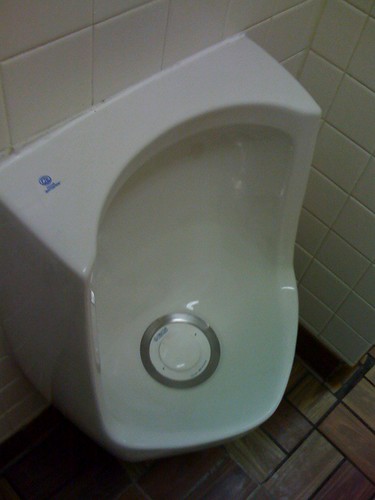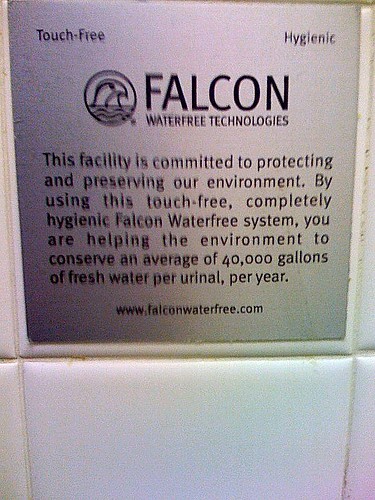Here’s a reality we deal with all the time: toilets that use a great deal of clean, potable water in order to flush. This urinal for instance, requires one gallon, or 3.8 litres, just to flush some pee, which seems excessive:
The sustainability problem here has multiple facets: the availability of water, the financial cost of water for the building owner, and the energy needed to treat and transport water, just to name three. The latter challenge alone makes up a large percentage of every city’s energy expenditure.
Let’s say we were a toilet manufacture responsible for a great deal of this water use. How might we develop concepts to address this problem? Here’s how I would use two tools from the concept design toolbox:
The problem we’re trying to address here is very clear (as opposed to, say, create a toilet that people are more likely to buy). So we can play with idealized design to set our bar very high for solving this particular problem. A ideal design statement is:
A urinal which uses no potable water at all.
Then the team could play question the brief on this statement to generate variations. Here’s a few:
- A urinal which uses greywater.
- A urinal which flushes with something other than water
- A urinal which does not use water
- A receptacle that accepts urine that is not a urinal
…and so on. Then the team could take each of these statements and workshop them, sketching and sharing and playing with ideas. Each different set of constraints helps us think differently and generate different ideas, for example the first could have us thinking of all sorts of ways of capturing and routing greywater.
We could probably generate several plausible concepts using this combination of idealized design and question the brief. One of those might be the Falcon Waterfree urinal.
And a little PR doesn’t hurt…





